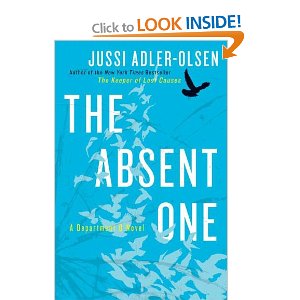Some books are too complicated for a reader’s good. Here’s what I do about it.
Many of the krimmies I read have two parallel story lines: the police procedural and the villains getting up to villainy, often in every-other chapter. Toward the end these parallel lines meet. The technique is common but it takes an uncommon writer to do it well. To make both the plodding police and the risk-taking villains believable and interesting.
For the most part, the technique is connect-the-dots because it spins our the story, makes the book bigger (so the punter feels like it is more for the money, etc). A successful writer’s second book is never shorter than the first one, that must be a rule in publishing, and so on to the third in a mindless progression. But the results is unbalanced, not in page count, but in interest.
I am reading one such example now: Jussi Adler-Olsen’s The Absent One (2012).

The police procedural part is well done, the characters interesting, the office politics credible, the dogged persistence refreshing in a world of 30-second attention spans, the speculative leaps satisfying if sometimes ill-judged, the varying interpretations that evidence supports intriguing, and so on. That is the half I am reading.
But every second chapter concerns the villains, and they are such cardboard characters that as they enter the pages a hiss rises from book. The author’s distant contempt for anyone with money and they are always the villains in these books is blinding. Everyone who drives a BMW or owns a house is presented as an unindicted war criminal who grew up pulling the arms off the children of the toiling working class. So I express right through those chapters by turning the pages. These villain-chapters fatten up the book but they only parade the author’s prejudices, no doubt in the effort to tap into the like prejudices of readers. Oh hum.
Ergo I can recommend half of The Absent One, but not the whole.
Skip to content
